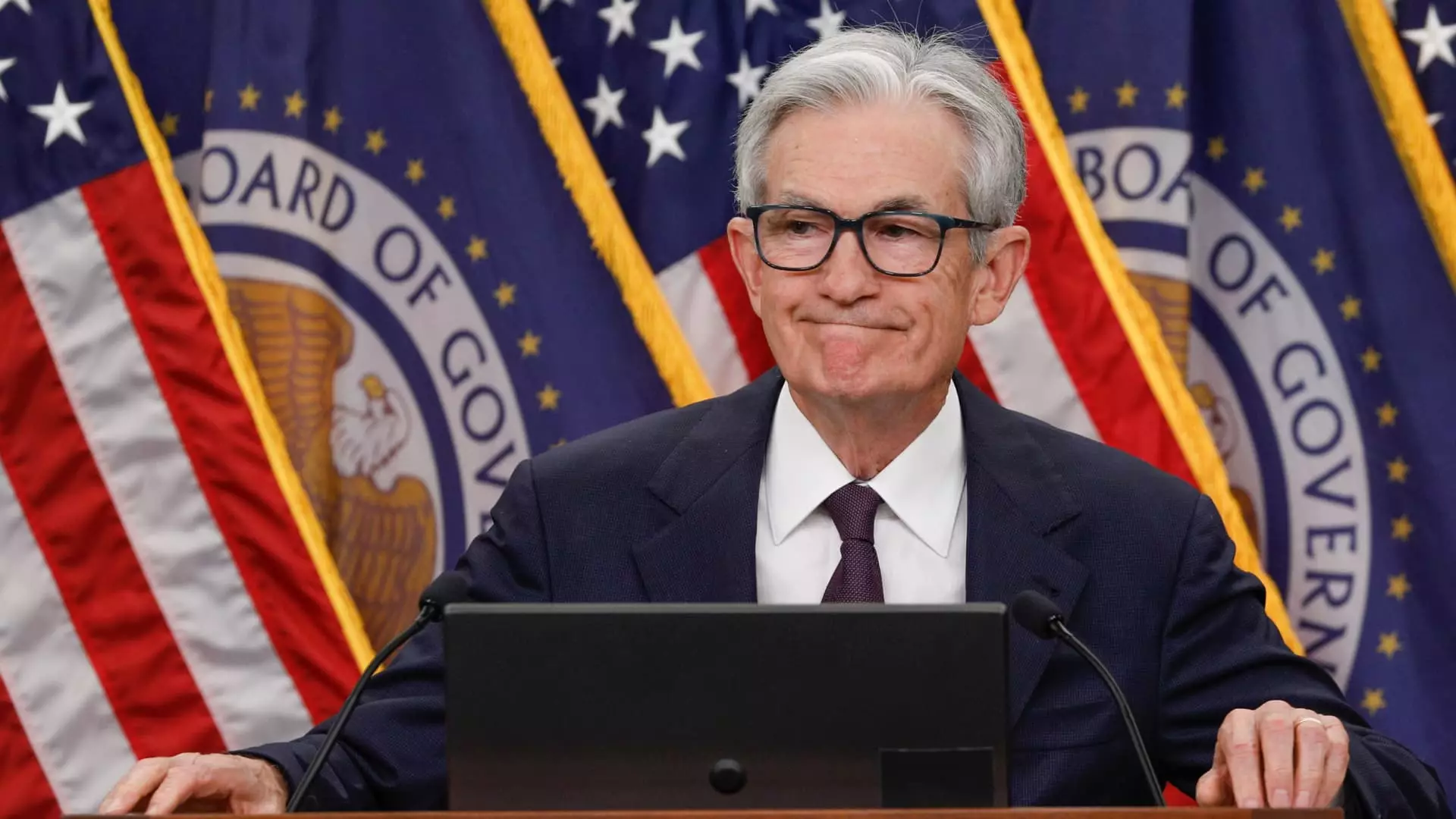As Federal Reserve Chair Jerome Powell gears up for his semiannual testimony on Capitol Hill, the atmosphere is charged with urgency. This week’s discussions will not be merely routine; they carry heightened significance as external and internal forces press for a shift in the Federal Reserve’s monetary policy. Powell’s appearance before the House Financial Services Committee and later the Senate Banking Committee is emblematic of the delicate balance he must strike. It is a balancing act between maintaining the Fed’s traditional independence and responding to increasing political demands, particularly those coming from the Trump administration.
Recent shifts in rhetoric from within the Fed itself have added to this complexity. Notably, comments from Fed officials suggest a growing inclination toward a rate cut as soon as July. The convergence of political pressure and internal dissent creates an environment ripe for speculation and volatility in financial markets. Politically charged commentary from figures like Mohamed El-Erian of Allianz indicates that the Federal Open Market Committee (FOMC) might encounter interference, complicating Powell’s task of preserving the institution’s autonomy in making economic decisions.
The Growing Ripple of Political Influence
The potential influence of politics on the Fed is a concerning development. In theory, the Federal Reserve is designed to operate free from the whims of political leadership, insulated from pressures that could compromise its mission to ensure economic stability. However, the mounting pressure from both the Oval Office and certain Fed governors indicates that the wall between politics and monetary policy may be eroding.
El-Erian’s observations encapsulate a stark reality: ambiguity in the Fed’s messaging may lead to challenges in achieving consensus among policymakers. With both Fed Governor Michelle Bowman and Christopher Waller advocating for changes, the divergence from Powell’s cautionary stance raises eyebrows. These dynamics hint at an unsettling reality—politics is encroaching on what has typically been a realm characterized by empirical analysis and data-driven policymaking. The reaction from financial markets has already begun to reflect this new paradigm, with increased expectations of imminent rate cuts.
The Role of Congressional Inquiry
Powell’s testimony is expected to invite rigorous questioning from both sides of the political spectrum. On the one hand, Republicans, echoing Trump’s mantra of aggressive cuts, may grill him on perceived delays in monetary easing. On the other hand, Democrats, including voices like Senator Elizabeth Warren, are likely to join in the chorus advocating for action to stimulate the economy, albeit for different reasons. This bipartite scrutiny could create a contentious atmosphere, compounding Powell’s challenges as he seeks to convey the Fed’s rationale without swaying too heavily to either political direction.
Yet, Powell’s situation is emblematic of the broader struggle faced by economic stewards who must navigate the currents of public sentiment while also adhering to the tenets of sound economic policy. The risk here is that responding too readily to political pressure could undermine the Fed’s credibility and long-term effectiveness.
Constraints and Misconceptions Surrounding Interest Rate Cuts
It is vital to unpack the broader implications of a potential interest rate cut. Market participants are currently pricing in an anticipated reduction, with the odds of a July cut hovering around 23% and significantly higher for September. However, the rationale for such a cut needs careful examination. Reducing interest rates is not a panacea—it is often surrounded by misconceptions concerning its instantaneous impact on economic conditions.
Critics of rapid rate cuts, like Jai Kedia of the Cato Institute, rightly argue that the Fed’s ability to influence immediate economic outcomes is often overstated. A full percentage point cut earlier did not yield the expected results; in fact, it correlated with rising Treasury yields, reflecting concerns about long-term growth and inflation. Thus, cavalierly pursuing drastic cuts could provoke instability rather than foster growth.
In light of this, Powell must adopt a more cautious approach that considers the long-term implications of any policy adjustments. The Fed’s mandate, after all, is to balance inflation stabilization with employment growth, not to cater to immediate political whims or market fluctuations.
The Argument for Strategic Patience
While calls for aggressive cuts are gaining traction, the complexities of the current economic landscape warrant measured action. Kedia rightly points out that reducing borrowing costs is not the primary role of the Fed. Navigating through the political din, Powell could champion a message of strategic patience, emphasizing the importance of collecting further economic data before committing to substantial shifts in monetary policy.
The crux of the matter lies in addressing the nuanced realities of the economy rather than rushing toward politically popular decisions. Powell and his team within the FOMC must weigh the diverse economic indicators and prioritize informed decision-making over short-lived political gains.
The intersection of politics and monetary policy is fraught with both potential opportunities and substantial risks. Jerome Powell must chart a course that respects the integrity of the Federal Reserve while also acknowledging the palpable pressures that arise from our evolving political landscape. The path ahead is precarious, but grounded, reasoned decision-making remains the cornerstone of effective economic governance.

